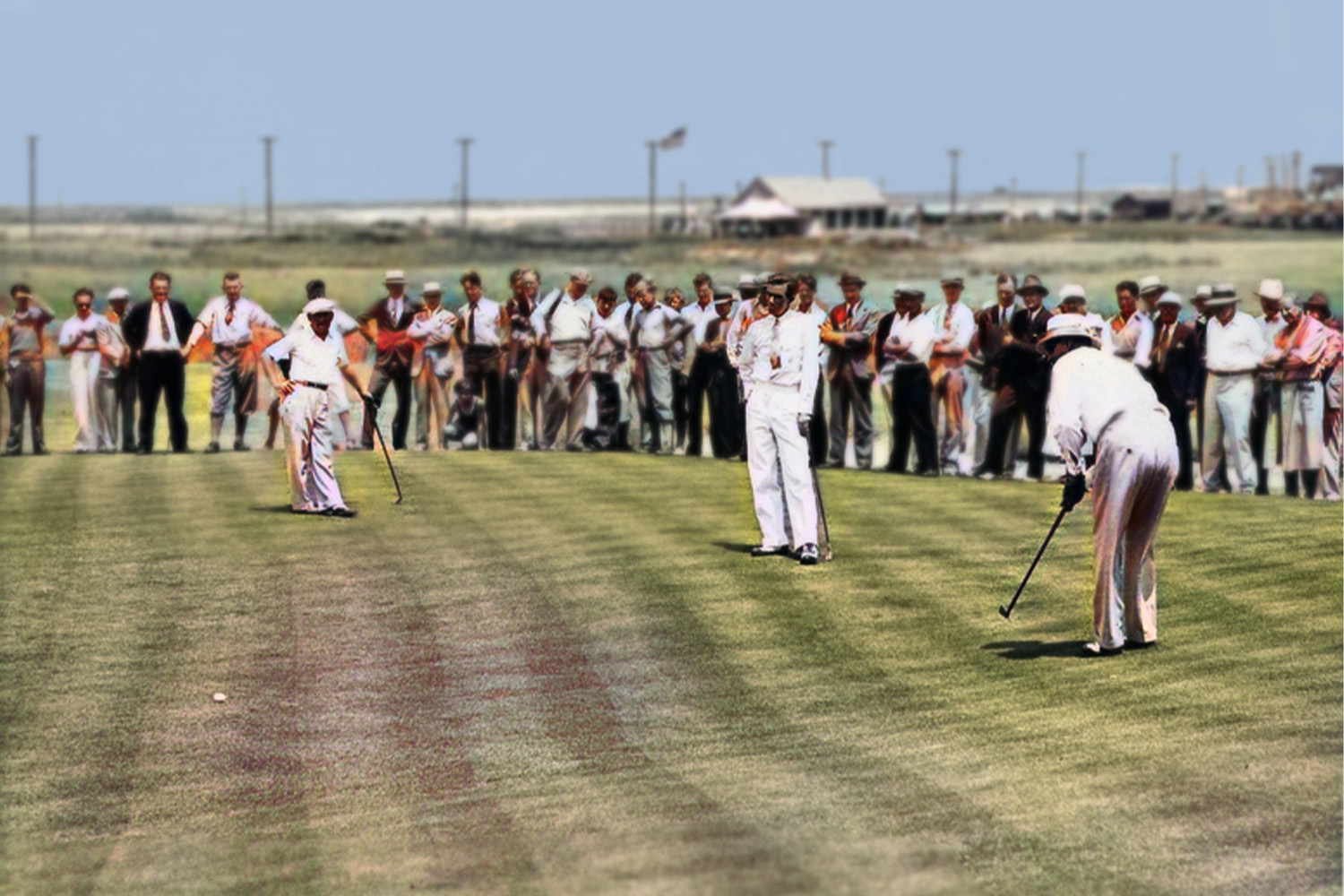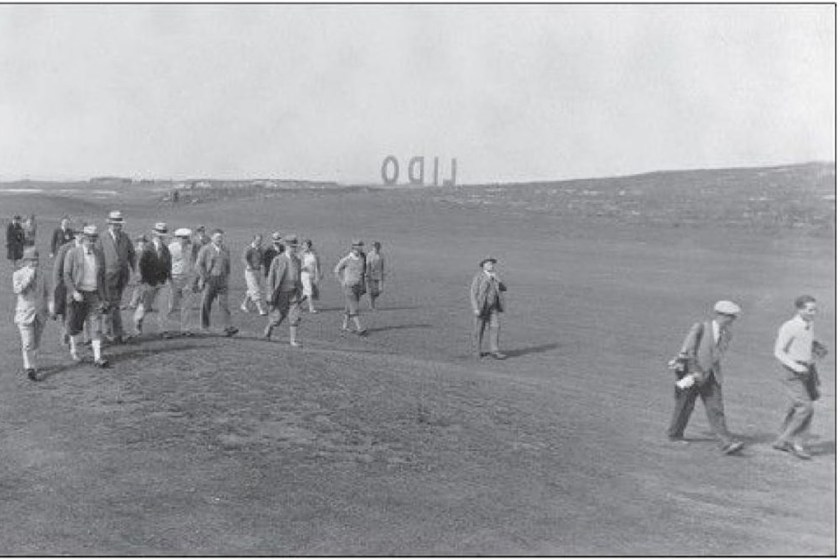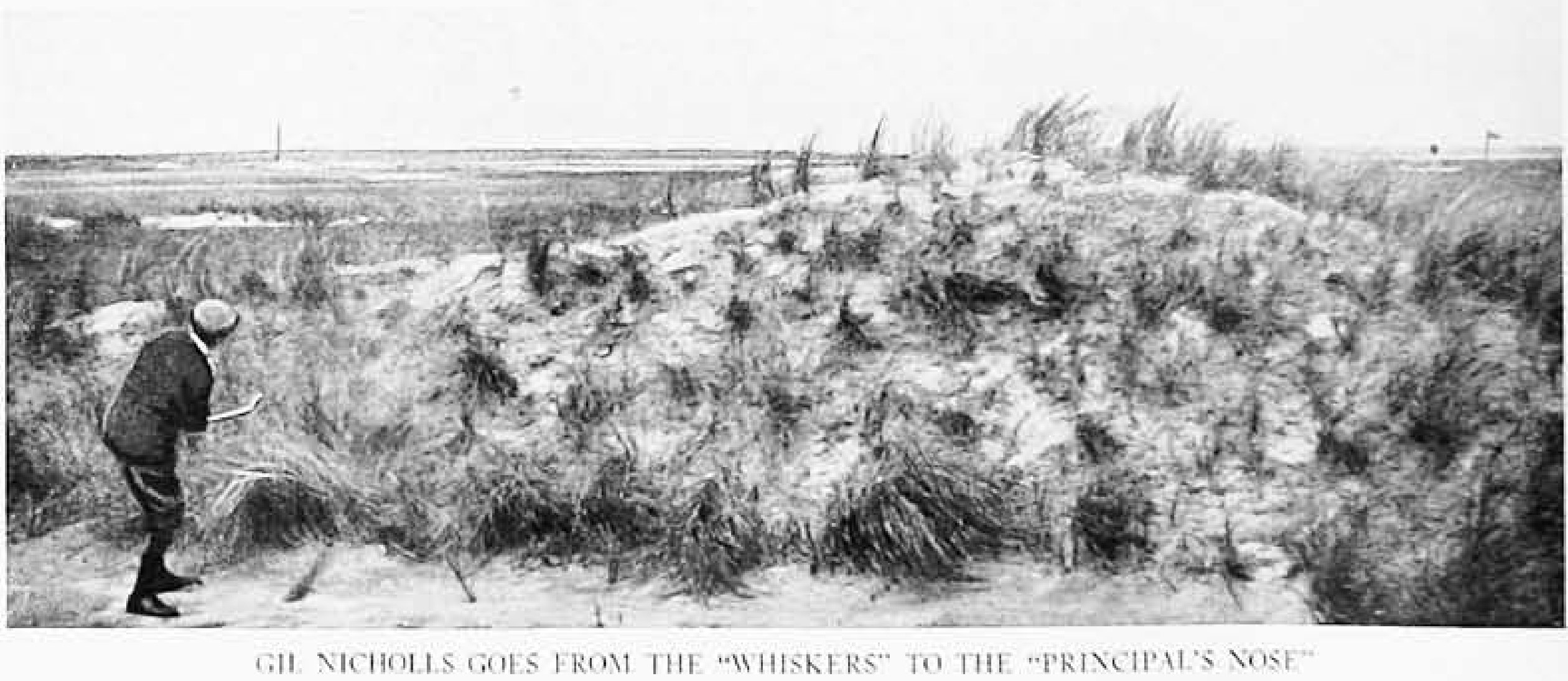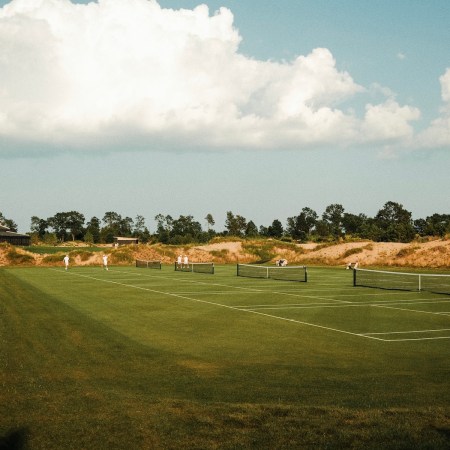
Peter Flory lives a few blocks from me in the Chicago suburbs. We barely knew each other when I first heard he was instrumental in resurrecting one of the greatest golf courses in history. And if it wasn’t for his wife’s Facebook post, I may have never known. Intrigued, I made the short trip down the street, rang the bell, and Peter let me in. Over pizza and beers, he told me this remarkable tale of happenstance and fate.
****
The long-vanished Lido course has occupied a mythic status in the golf world’s collective consciousness for nearly a century. For golf historians, it has represented nothing less than a gaping hole in the narrative of one of the world’s oldest sports. Set on Long Island, it was designed by legendary course architect C.B. Macdonald and built by storied construction engineer Seth Raynor, and was considered one of “The Big Three” of the era along with the National Links and Pine Valley Golf Club. More than 2 million cubic yards of sand were moved to create the canvas upon which Macdonald worked. Rather than being forced to follow what the land gave him, he could sculpt the course any way he saw fit. Which meant rippling fairways, huge greens with aggressive slopes and berms, and immense hazards.

It was considered Macdonald’s masterpiece, and it was extremely challenging in its day. After its first five years, the course record was a 77. It was a true Championship course, almost cruel in its difficulties. Bernard Darwin, one of the best golf writers of all time and grandson of Charles Darwin, called Lido “a battlefield for giants.” Adding to its lore, a design contest for one of its holes sponsored by Country Life magazine was won by Alister Mackenzie, providing him a springboard to his historic later work in the U.S. The course’s mythology was well underway before circumstance intervened and put it into overdrive. In the middle of the ‘40s America was caught up in a patriotic wartime fervor, and the Navy needed land for training grounds and a receiving station. The oceanside property that the Lido was built upon proved too valuable for a game of leisure, and the beloved golf course was plowed under — destined to live on in old golfers’ memories or fading scrapbooks.
The Zen Gardener in the Chicago Suburbs
Peter’s office is immaculate. On his neatly appointed desk sits a powerful laptop and two large monitors. Behind him, leaning against the wall, are a few antique hickory clubs (one of which was rescued from a dump and Peter personally restored to near-mint perfection). On the wall are golf-related pictures: images of the Old Course at St. Andrews and an aerial map of the Lido.
“So this was the Lost City of Atlantis of golf,” says Flory, who is a financial consultant, amateur golf historian and nationally ranked hickory golf player. “All the golf nerds were romanticizing this forever. I had always heard from everyone that this was a top course in the world and wouldn’t it be great if it could come back. But nobody seemed to know exactly what it was.”
When Peter talks about the Lido, he sounds like a man on a mission. As he explains it to me: “If it was number one in the world, and Pine Valley, National Golf Links of America and Merion are still top courses in the world, and they aged that well, then this probably would have too. It was not just great back then, it probably still would be. I wanted to find out.”
Being an avid golfer and living in the Chicagoland area, where the weather and year-round golfing don’t exactly go hand in hand, Peter had been building virtual holes on the computer that he and his kids could play on the simulator in his basement.
“When the kids were little I wanted to build a 50-yard [virtual] hole they could play,” he recalls.
He was dabbling in the video game program PGA Tour 2K21, which allows you to design courses (and play them) with a fairly high degree of fidelity. He also began indulging a passion that he’d had since he was a child: designing courses for his yard, nearby parks and on his grandparents’ farm. He realized that he “wanted to bring things back from the dead that people thought were great but didn’t really know what they were.”
His day job was stressful and the days were long, and he started to see the hobby as his “little Zen garden.” It was a place he could zone out and move trees and hazards around and just relax. He was also getting pretty good at it. One day, he decided to try to build out a part of the Lido course for his simulator.
“I’ll show you what I had to work with,” he says. With the click of a mouse he pulls up scores of old black and white images of the Lido on one screen. These were the building blocks of the Lido project. “There would be photos like this where no one knew which hole it was. There were hundreds of photos, but not in one place.”


It was enough to start, but Peter needed more. A lot more. Many of the photos were from later eras, post-construction or flooding, and they didn’t paint the right picture of the course in its heyday. So he did what any self-respecting historian would: he crowdsourced. He posted a portion of a hole he was working on Golf Club Atlas and the information came flooding in.
“Once I posted what I was doing, people were like ‘I’m sure you have this photo but just in case.’ I got a lot of feedback like ‘I think you’re looking at it wrong.’ Once I got that hole done and people saw it, everyone who had a picture sent it. There was a feedback effect, and it got easier. I could start to identify things by what was in the background.”
Before he knew it, he had in his possession one of the biggest collections of images of the Lido anywhere in the world. Piece by piece, the vanished course was being recreated one painstaking sand trap and one undulating green at a time. Peter was onto something, and as the virtual images coalesced, his desire to complete the entire Lido to perfection intensified.
The Gardener Becomes Unflappable Detective
Peter shows me how his meticulous process worked. “If I want a shrub, I can put a shrub right here,” he says. And with that, a shrub is planted right beside a fairway. “It’s really simple.” He manipulates the video, swiveling the perspective. “This is why the technology is so important. I can go from any angle and look at landmarks in the distance. It’s just a big regression analysis from the evidence.”
That capability allowed Peter to sleuth out the different views in all the photos he had collected. “If that’s a man,” he says, pointing out a spectator in the photo, “and that’s his waist, then I know how tall that is.” Watching him work, it’s clear how this took him three years of Zen gardening. He says he never got frustrated because he never had a goal or due date. “It was like an archaeological dig. I would take the toothbrush out and dust some stuff off.”


Eventually, he had the course built out to perfection. Every contour and dimension was supported by evidence. He posted the full file online, and there was interest, but it wasn’t anything overwhelming. The posting led to some podcast coverage, but that was about it.
As Peter described it, the video gamers and the historians are two pretty different camps and the sparks weren’t flying.
But one thing led to another, and through word of mouth, Peter eventually found himself in touch with Chris Keiser and Michael Keiser (who run Sand Valley Resort in Wisconsin) and architect Tom Doak of Renaissance Golf. They had heard about what he’d created, and wanted to see how accurate it was. They had their own visions of recreating the Lido, but the stars had never aligned. So Peter drove up to Madison with his laptop and met with Michael Keiser. “I showed it to Michael and he was like ‘I really want to build this.’ And my little fantasy became way cooler than I ever imagined.”
Armed with Peter’s virtual renderings, Doak and the Keiser brothers took the wheel and there was nothing standing in the way of the rebirth. In addition to having Peter’s rendering, they also had another key in place: the land. The Keisers had a solution that was reminiscent of the blank slate Macdonald had back in the day. They purchased a property adjacent to the Sand Valley Resort that was relatively flat, sandy, and would be the perfect canvas upon which to bring the course to life.
One last hurdle was getting Peter’s game renderings into a format suitable for architects and builders to work with. Luckily, a software engineer came on board who figured out a way to convert the 3D video game version into topographical maps. Construction on the course began in 2021.
A Weird and Wonderful Thing
“Every time I would go up there it was like seeing a child grow,” Peter says. “It was almost cooler seeing it periodically. I got that weird feeling when it became real.”
And real it was. Last fall, Peter, Doak, Michael Keiser Jr. and filmmaker Erik Anders Lang had the privilege of playing the course’s first 18-hole in-order round. Their experience was documented in a short film for Adventures In Golf, and if you watch the film, you’ll see their excitement was palpable.
“We were all kind of in awe of it,” Peter says. “This thing hadn’t been touched for real in 80 years. It was so relaxing. It was pretty calm at twilight and it was glorious. We were the only ones out there. It felt like a historical, magical moment. It felt Field of Dreams-y…the guys walking out into the cornfield.”
When he describes it, he still sounds like he can’t believe it. I asked him if it was as difficult as he thought it would be.
“It’s not the hardest [course], but pound for pound it’s about the hardest. It’s tough, yeah.”
Not surprisingly, being an instrumental part of the Lido’s resurrection has opened doors for Peter in the golf world. But he knows there will never be another project like the Lido.
“We’re doing something that’s never been done. There’s been cases where courses have gone fallow and then got revived in its tracks. But no one’s ever done anything like this.”
It was one of these beautiful once-in-a lifetime moments where passion, skill, timing, technology and random events all conspired to create possibility.
“I just wanted to play it in the basement. My true motivation was to understand what it was and share that with people. I thought, for the sake of golf history, that would be a cool thing. Otherwise, you have this number one course in the world that no one knew and that just frustrated me more than anything.”
Peter gets most animated when he speaks of the Lido’s brilliance: “It doesn’t say this anywhere, but this is Macdonald’s ode to the Old Course at St. Andrews. That is where he fell in love with golf, and then he was denied it for 20 to 30 years when he was banking back in America — it was a time when there were few golf courses in the country. This was Macdonald’s Rosebud.”
Against the odds, Peter has played a key role in bringing it back, and this spring the Lido officially opens, and will undoubtedly inspire new generations of golfers to fall in love with the game — and link them to one of golf’s greatest stories.
The Lido opens in May at Sand Valley in Wisconsin. The Lido course will be available to members as well as select rounds for those who stay at Sand Valley Resort.
The Charge will help you move better, think clearer and stay in the game longer. Subscribe to our wellness newsletter today.












